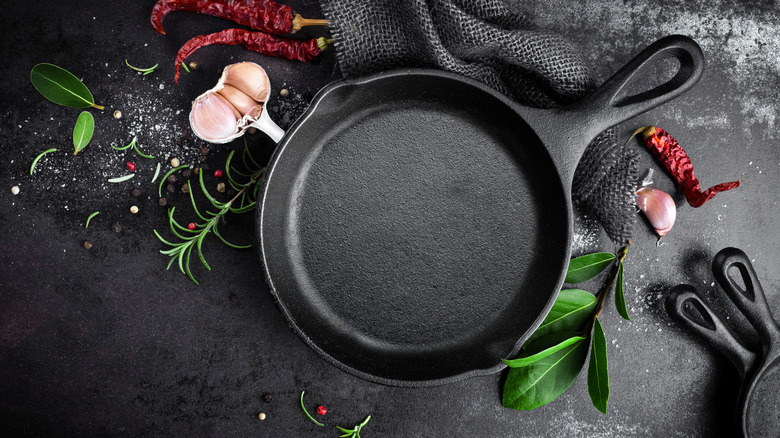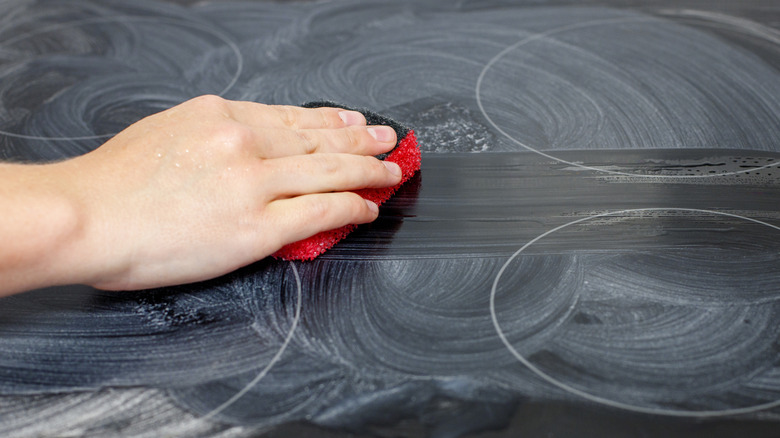Yes, You Can Use Cast Iron On An Induction Cooktop, But Be Careful Of This One Thing
We may receive a commission on purchases made from links.
One piece of cookware that should be in every kitchen is a cast iron skillet. This versatile pan can withstand high heat, create a good seared steak or a fluffy loaf of bread, and still last a lifetime. If you don't have one yet, try the cast iron pan José Andrés uses almost every day. It's not just for those with a gas stovetop. Yes, you can use cast iron on an induction cooktop, just be careful of this one thing: Scratching the surface.
Cast iron pans are made of a strong mix of metals like pig iron and steel. This makes it super durable, but also difficult to maneuver. To avoid leaving any scratches or scuff marks on your sleek induction stove, be careful when you use this pan. Don't drag or slide it around. Instead, move the cast iron intentionally from burner to burner with the help of protective tools. Always move a cast iron with gloves on, or keep a silicone handle cover attached. This also helps avoid any surprise drops from accidentally touching the hot skillet.
For assured protection, invest in a protective stove cover like the Lazy K Induction Cooktop Mat, or other options like the Beswarmy heat conduction plate. Keep this underneath your cast iron while cooking. While cast iron pans don't need heat conduction plates for heat transfer purposes, they do provide the benefit of protecting your stovetop from scratches. If you have one on hand, you may as well use it.
Accidents happen. Here's how to fix them
So there you have it: It is safe to use cast iron on glass stove tops. Still, even with the above tips in mind, accidents happen. If you happen to accidentally scratch your induction stovetop with your cast iron skillet, here's how to fix it.
First, clean the stovetop as usual to prevent any excess crumbs or spills from seeping into the crack. Next, mix baking soda and water or baking soda and vinegar until it forms a paste. Using similar cleaners like Bar Keeper's Friend Powder Cleaner also works well. Slather this mixture onto the stovetop, and using a toothbrush, sponge, or microfiber cloth, buff out the scratches. (Avoid using abrasive cleaning tools like steel wool as this will further scratch up the stovetop.) This does the same job as sanding down wooden surfaces. It wipes away any rough spots or imperfections.
Once you've scrubbed off the scratch, wipe away the residue with a damp cloth and dry the stovetop completely. If the scuff isn't completely gone, you can repeat this process. Still, if the scratch is deep, this trick alone might not be able to remove it. It will help lighten it up and make it less noticeable, but to get rid of it altogether, you might have to call in the professionals and get the glass replaced.

